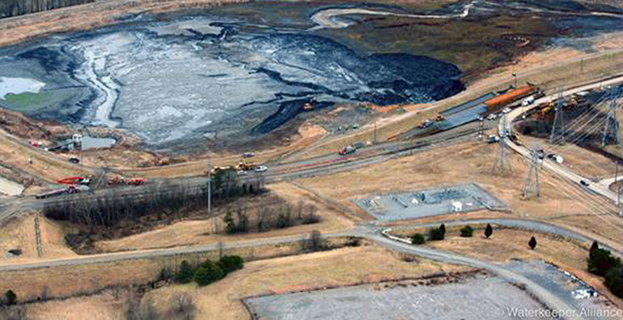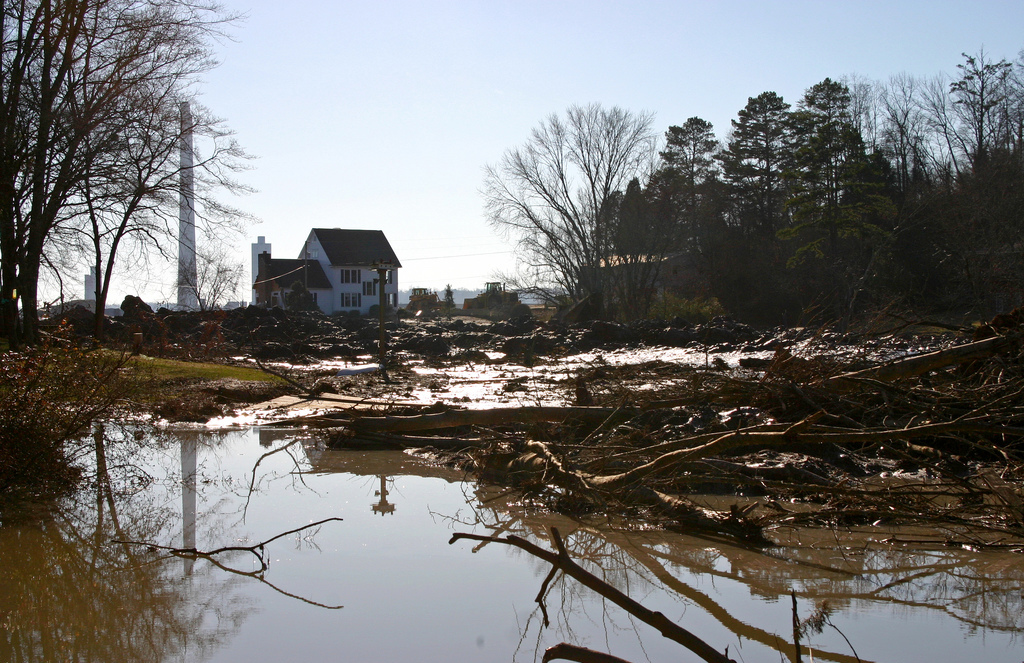Posts Tagged ‘Coal Ash’
Attempts at Legislation, Regulation Follow Water Threats
By Molly Moore Almost as soon as West Virginia American Water Company ordered 300,000 residents to avoid contact with their tap water, the question arose: why was crude MCHM, a chemical now known to be highly toxic, so poorly understood and regulated? The lack of a clear answer brought national attention to the fact that…
Read MorePushing for Effective Coal Ash Rules
On Jan. 29, the EPA was ordered to finalize the first-ever federal regulations for disposal of coal ash by Dec. 19, 2014, following a lawsuit brought by environmental and public health groups and a Native American tribe.
Read MoreAn Unforgettable Lesson, Forgotten
Just after midnight, a thunderous swell of sound peeled apart the silence that had settled onto Harriman, Tenn. A mountain of black coal ash — the waste byproduct of burning coal — descended upon the surrounding neighborhood, snapping trees and ripping three homes from their foundations.
Read MoreGroups Challenge EPA Decision to Gut Clean Water Protections in Kentucky
Resources View the Complaint Here EPA Approval Letter Selenium Fact Sheet New Guidelines for Coal Mining Pollutant Fail to Protect Waterways and Wildlife Contacts: Eric Chance, Appalachian Voices 828-262-1500 eric@appvoices.org Sean Sarah, Sierra Club 330 338-3740 sean.sarah@sierraclub.org Doug Doerrfeld, Kentuckians For The Commonwealth 606-784-9226 dartherdoer@gmail.com| Judy Petersen, Kentucky Waterways Alliance 502 589-8008 Judy@kwalliance.org Louisville, KY…
Read MoreAnna Behnke: A Seventh Grade Activist
By Sarah Kellogg Seventh grader Anna Behnke loves to swim in Mountain Island Lake, but two years ago, she learned about the water pollution caused by Duke Energy’s Riverbend coal-fired power plant and began to worry about the impact the pollution could have on children’s health. So, for a sixth grade science project, Behnke tested…
Read MoreInvestigation Finds Fraud in Black Lung Cases
By Kimber Ray A year-long investigation revealed evidence this fall that the coal industry has supported fraudulent practices in order to block workers’ compensation claims for black lung disease. According to the investigation conducted by The Center for Public Integrity and ABC News, it appears that officials at prestigious medical institutions including Johns Hopkins Hospital…
Read MoreEPA decision on toxic mining waste leaves Kentuckians, other Appalachians at risk
Resources EPA Approval Letter Selenium Fact Sheet Read more on our blog Contact: Erin Savage, Water Quality Specialist, 828-262-1500, erin@appvoices.org Cat McCue, Communications Director, 434-293-6373, cat@appvoices.org Washington DC – The U.S. Environmental Protection Agency today approved Kentucky’s changes to how the state measures selenium, a toxic pollutant discharged from many mountaintop removal coal mines. Even…
Read MoreWorkers Exposed to Toxins at Kingston Ash Spill Cleanup
By Kimber Ray A federal lawsuit alleges that Jacobs Engineering Group knowingly exposed workers to toxic substances during cleanup of the 2008 coal fly ash spill at the Tennessee Valley Authority’s Kingston Fossil Plant in Harriman, Tenn. The lawsuit, filed Aug. 22, claims Jacobs Engineering deliberately misrepresented the health hazards of fly ash, failed to…
Read MoreFederal Court Orders EPA to Move Forward on Coal Ash Regulations
FOR IMMEDIATE RELEASE Washington, D.C. – A federal judge agreed with environmental and public health groups that the Environmental Protection Agency needs to set federal regulations for the safe and proper disposal of toxic coal ash. A copy of the judge’s order can be found here: http://earthjustice.org/sites/default/files/files/RCRA_NOI_Order.pdf The groups filed the lawsuit in April 2012…
Read MoreCoal Report
Impoundment Safety Called Into Question Questions and criticism followed a Nov. 30 accident at a CONSOL Energy-operated coal slurry impoundment in West Virginia that left one worker dead. A few days after the incident, The Charleston Gazette reported that records “outlined company concerns that construction to enlarge the dump had not been moving fast enough…
Read More

